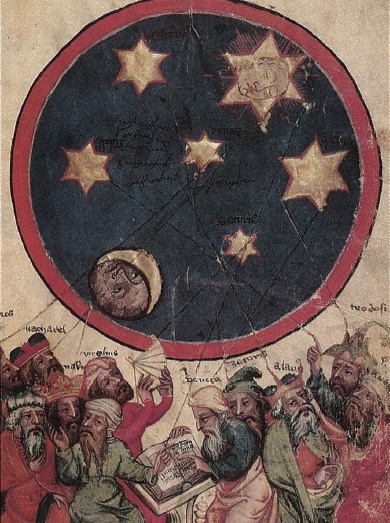Eclipses, any astrologer will advise you, are dicey events. Important works should not be begun six days before or after a total eclipse (three days for a partial), because eclipses tend to stir up karma, catalyze confusions, bring unexpected events, cause mishaps, etc. So when we were invited to the Second Annual Symposium on Vedic Astrology, February 27 to March 2 in Kona, Hawaii, just one day after the total eclipse of the 26th, we were puzzled–and worried that an object lesson in timing was about to befall us.
Kona is on the “Big Island” of Hawaii, about 500 miles from our Hindu monastery on the “Garden Island” of Kauai. We were invited to conduct an opening puja blessing and give one of the workshops. And things did get off to a rough start. We forgot to take an important parcel and nearly missed our connecting flight in Honolulu. Upon arrival in Kona, our bag containing the worship implements for the opening was missing.
The puja at the Keauhou Beach Hotel was to begin at 7:00. The dozen US-based astrologers (most prominently Chakrapani Ullal of Los Angeles) had gathered to conduct the presentations to the 80 people who paid $245 each to participate in a program of lectures and workshops ranging from an “Introduction to Vedic Astrology” by Chakrapani to “Advanced Techniques in Gochara” by Christina Collins-Hill. We delayed as long as possible and then proceeded without the necessary puja articles, improvising with a wine glass for a bell and a candle as an arati lamp. Just knowing we were in an eclipse period gave a certain humorous detachment from it all.
The power of an eclipse was the main discussion topic the first evening–and there was plenty of testimony about how real the impact was. Most of the teaching faculty, comprising some of the best Vedic astrologers in US, gave their personal testimonies. Christina told how she left her home a few days early to avoid the eclipse (but still within the six-day period). She intended to cast a chart for the best departure time, but her husband talked her out of it. On the way to the airport, their car caught on fire.
James Kelleher, of Los Gatos, California, a co-sponsor of the symposium, surprised everyone with his “dare and test” approach to traditional beliefs, explaining how he tried doing things during “inauspicious” times as a test. He doesn’t recommend this to clients, narrating how he narrowly escaped from a serious skiing accident during an eclipse. Personally, he felt there was no need to be paranoid about eclipses, but at the same time one should not brazenly tempt the planets.
Despite the initial startup difficulties, once things were flowing in a routine, the following three days were fairly smooth. We were impressed by the amount of Hindu Dharma that was being taught along with astrology. Most all of the astrologers and participants were of Western background, but everyone was open and hungry for the knowledge of Hinduism. It seems the more Westerners learn and practice Vedic Astrology, the more they learn about Hinduism and are drawn to adopt its practices and principles. Someone commented that anyone drawn to Vedic Astrology was very likely a Hindu in a recent past life.
Vamadeva Shastri (Dr. David Frawley) gave a beautiful talk on Lord Ganesha, Lord Muruga and Lord Hanuman, including some of his personal experiences with these divine beings. A workshop by Dennis Flaherty on knowing your purpose and vocation according to your chart was an accurate, even profound, lecture on the four purusharthas, or goals of life according to the Vedas–dharma, our purpose; artha, what we choose to accumulate; kama, pleasure; and moksha, enlightenment and freedom from rebirth–and how these are reflected in the horoscope.
During the last day of workshop “intensives,” which ran from 10am to 5pm, Chakrapani unfolded the mysteries of relationship compatibility and cultural context. Examining the chart of Liz Taylor, Chakrapani explained that if she had been born with the same horoscope but raised in a traditional Hindu family in India rather than in the West, she would have married only once (instead of eight times) because Hindu beliefs, culture and society would override certain tendencies of her nature. He stressed how important it is to understand the full background of a person in order to give a correct chart interpretation. He analyzed the charts of Hugh Hefner, Madonna and Jack Nicholson–there wasn’t time for Bill Clinton–as examples of how an individual’s nature and tendencies are a key factor in matching two charts for marriage. Some people, he said, are just not suited for married life, no matter how good a compatibility there is with a potential partner.
The conference ended without incident. Each returned home with new friends, new knowledge and a greater appreciation of eclipses, which most certainly strain the inner and outer atmospheres.


